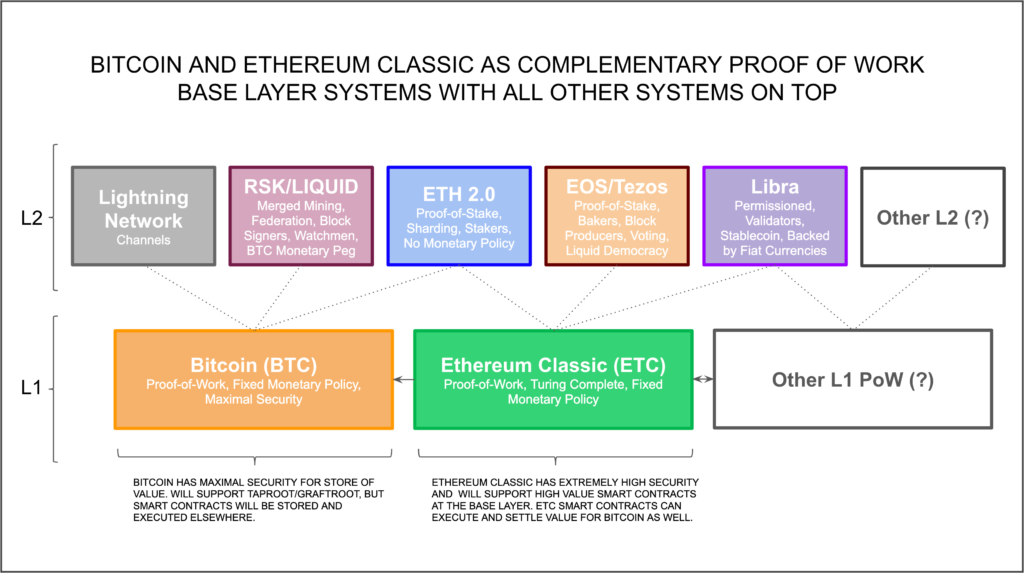You can listen to or watch this article here:
Ethereum Classic (ETC) is a distinct and sound decentralized computing model that does not undermine Bitcoin’s purpose in any way.
This is because ETC is Turing completeness + proof of work + fixed monetary policy.
High security smart contracts (decentralized programs) execute in the same secure environment at the base layer, not outside with fancy pegs and federations or insecure drivechains.
Ethereum Classic’s philosophy and model is the same as Bitcoin: High value, high security transactions at the base layer, and high performance, low value transactions on layer 2 systems and above.
The difference is that Bitcoin is incapable of storing and executing programs inside its highly secure environment.
The tradeoff is that ETC is marginally less secure than Bitcoin and Bitcoin is pure store of value. However, it’s better, and the market will naturally choose, to have a few parallel systems with everything else stacked on top, rather than a single chain supporting all.
In fact, it is very likely there will be 3 or 4 systems at the base layer, not only for the need of Turing completeness, but also because:
1. Bitcoin is not free of systemic risks.
2. It is not trustless, but trust minimized.
3. People will want, and need, to diversify such risks.
Furthermore, as Bitcoin will support computed smart contract strings with Taproot and Graftroot, ETC can easily operate on BTC, and all systems on top may operate on BTC and ETC depending on their risk and functionality tradeoffs and requirements.
Code Is Law
